Sandro Chia, pseudonym of Alessandro Coticchia (Florence, 1946), is an artist, painter and sculptor among the leading exponents of the Transavanguardia movement. He has spent much time divided between Italy and the United States, where he first went in the 1980s. His works are initially found to be more conceptual, and then move into a more figurative phase. Basically, in both phases there is a common element, namely the ’dreamlike and surrealatmosphere that surrounds the protagonists.
Over the years, the human figure acquires more and more space in the perimeter of Chia’s canvases, assuming hieratic proportions. Although the characters presented are humble, the artist presents them as if they were to all intents and purposes mythological heroes, elevating the composition even further by often using more or less obvious references to the great masterpieces of the past, reworking them and bringing them into a personal dimension.

Sandro Chia (real name Alessandro Coticchia) was born in Florence on April 20, 1946, and studied at the Academy of Fine Arts in the Tuscan capital. For a time he traveled in India, Turkey and Europe, and once back in Italy, in 1970, he settled in Rome and set up his first solo exhibition in 1971 at La salita gallery. A few years later he joined the Transavanguardia collective and participated with the group’s other artists in the “Aperto 80” section of the 1980 Venice Biennale, later mounting a solo exhibition in New York. After about a decade spent in Rome, he decided to move to New York itself, where he stayed for about twenty years while still continuing to move regularly between the United States and Italy.
He returned again to the Venice Biennale in 1984 and 1989, while continuing to exhibit his works in major Italian and international museums, such as the Castello di Rivoli, and then in New York, respectively in the Solomon R. Guggenheim in 1983 and the Met - Metropolitan Museum of Modern Art in 1984. The artist still lives today between Miami, Rome, and Tuscany, more precisely in the Castello Romitorio in Montalcino. Since 1987 he has also been involved in the production of prestigious wines, including precisely the famous Brunello di Montalcino. The Italian state acquired three of his works in 2003, which became part of the permanent collection of the Senate of the Italian Republic in Palazzo Madama, while in 2005 the Province of Rome purchased two monumental sculptures that were placed in front of its headquarters in Rome. Auctions featuring his works are quite frequent and very successful, for example in 2007 the work The Pharmacist’s son (1981) was sold at Christie’s in the UK for 300,000 euros, setting a record.
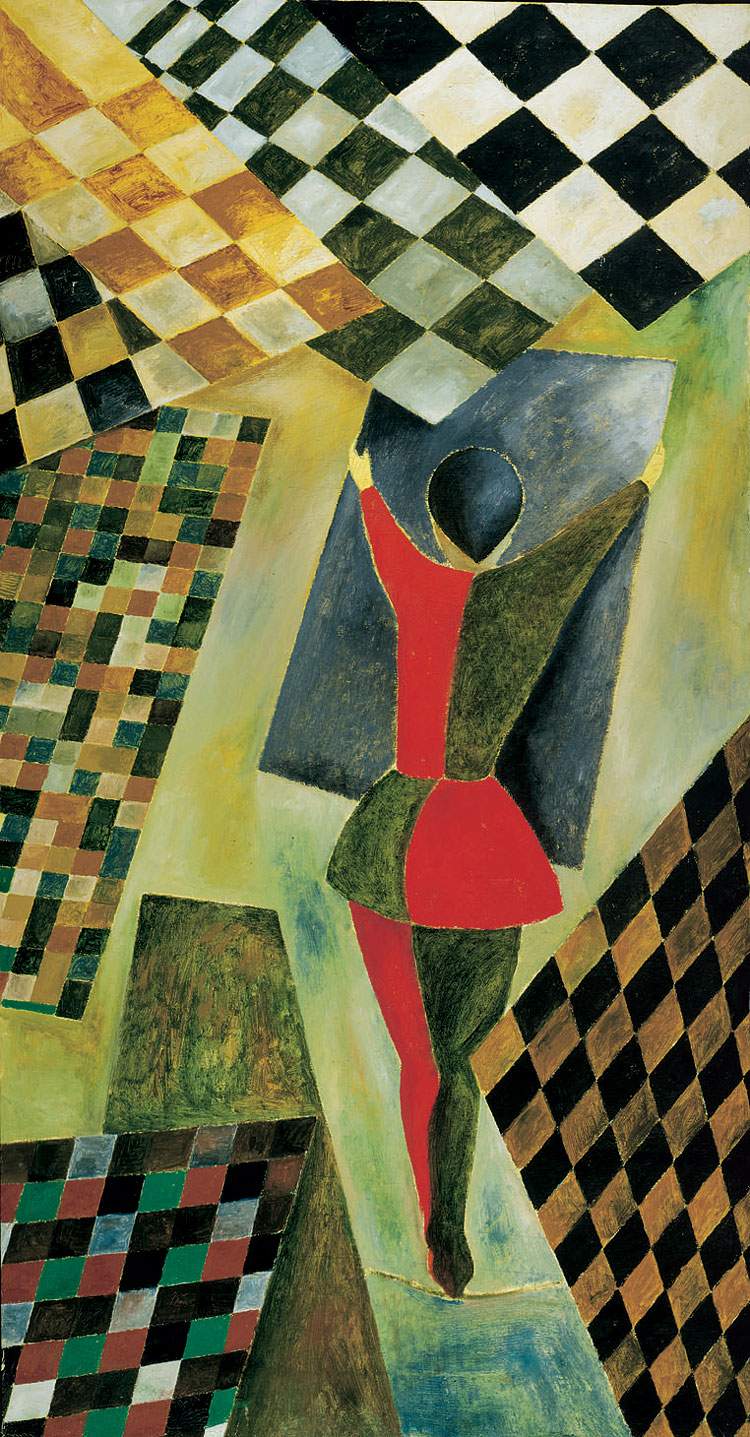
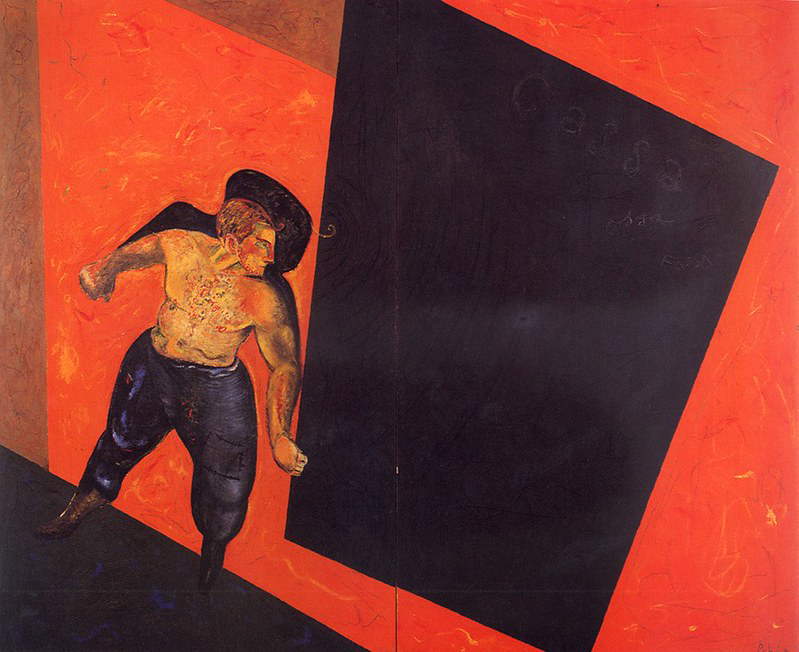
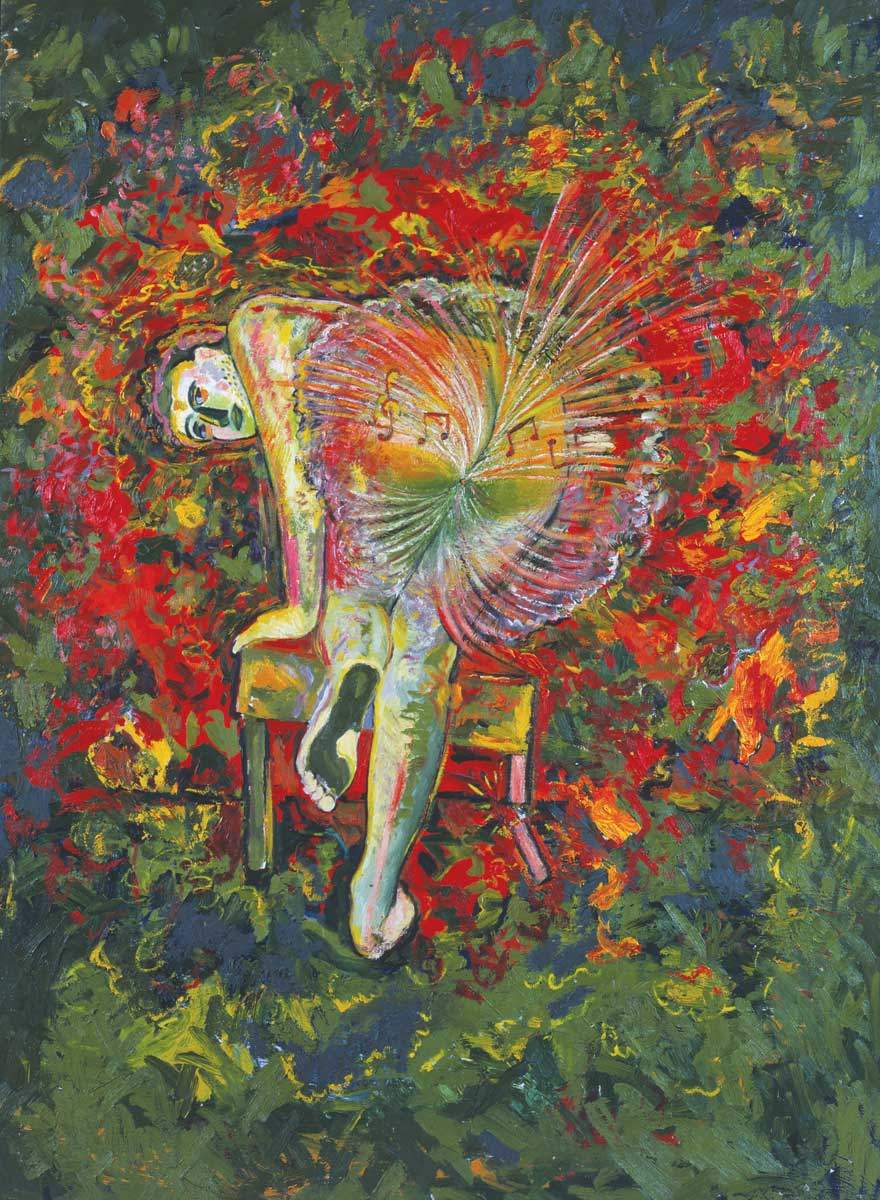
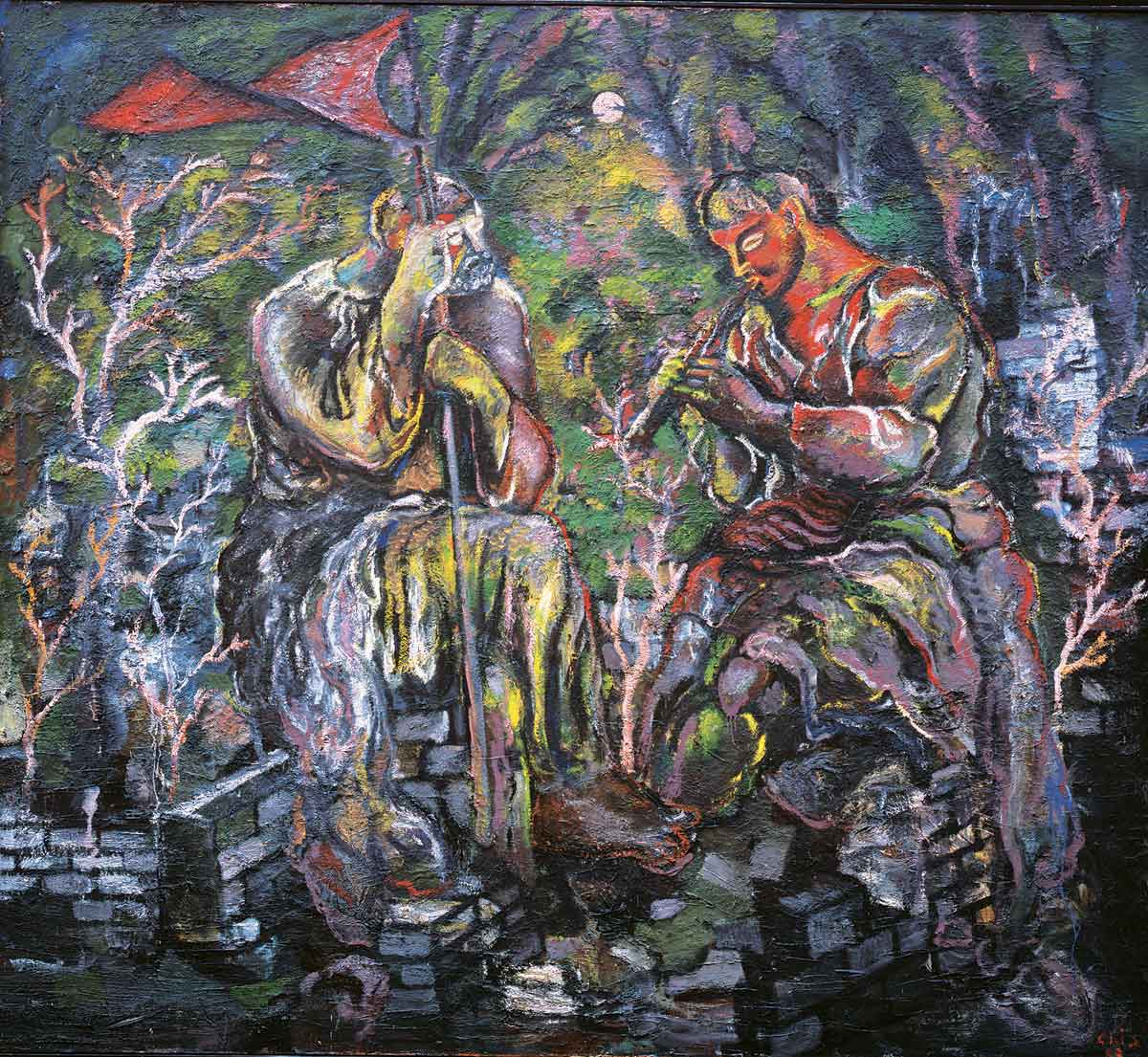
The artist initially turned to ’conceptual art soon after his move to Rome. From the mid-1970s Chia preferred instead to devote himself to figuration, and he joined the Transavanguardia group, becoming one of its best-known exponents. The movement had been founded by art critic Achille Bonito Oliva, and included Francesco Clemente, Mimmo Paladino, Nicola De Maria, and Enzo Cucchi. Transavantgarde artists were distinguished by their use of very bright and impactful colors, spread on the canvas with very decisive and mellow brushstrokes. Meanwhile, beginning in 1982, Chia began to devote himself to sculpture in parallel with his painting activity.
The concept that characterizes Chia’s art is the belief that the sap that feeds art is intrinsic to itself. The artist believes that it is necessary for artists to know what has come before them and to look at the masters with a respectful eye so that they can then quote them in their works. In fact, Chia looks a great deal at the masterpieces of artists of the past, including Titian, Masaccio, Tintoretto, Lorenzo Lotto, and Michelangelo Buonarroti, but also at contemporary examples of the caliber of Giorgio de Chirico, Fernand Lèger, Paul Cézanne, Francis Picabia, and Marc Chagall, reworking their achievements and making them his own through numerous references and quotations that he brings into his works, often even in an ironic and allusive way.
Chia’s early works are, therefore, certainly figurative but very conceptual, including La mercante di scacchiere (1976), in which a female figure from behind moves among several checkered surfaces of different colors and sizes that fill the entire canvas, just as if one were in a dreamlike dimension; or Ossa, cassa, fossa (1978) in which a man gazes into a sort of abyss represented by a black parallelepiped carved out of a red wall, in which the words that give the work its title can be read; finally, one of the works in which there are quotations derived from De Chirico’s metaphysical works, namely Sul tetto, sulla strada (1979), is recalled. As the years go on, little by little human figures take over much of the space of the canvas. These are characters well delineated by outlines defined with black color and made up of mighty volumes, towering over vivid backgrounds that have no place and no time, perpetuating the feeling of being in front of a visionary dream made up of seemingly irreconcilable contrasts between them. In particular, one can recognize in these works explicit references to the contrasts between the ancient and the contemporary, between the Apollonian and the Dionysian, between passion and rationality. It is no coincidence that in both Chia’s sculptural and pictorial works the character that recurs most frequently is the male presented as a hero, symbolizing the artist himself in an attitude of rebellion and self-affirmation. The works thus become for the artist an adventurous challenge whose ultimate goal is to find his own freedom and to be able to let go completely without limits.
The expedient of the hero, however, is constantly downplayed by Chia through the use of irony, which is evident, for example, in Sinfonia incompiuta (1980), in which a figure seen from behind, turned to look at the viewer, vents his creativity as if it were a bodily instinct to be let free. In this specific case, creativity is represented by a musical score, but in any case the artist implies that he is referring to creativity in general in the work. Subsequent to this work is Figure with Flag and Flute (1983), where two men are portrayed sitting outdoors at night, one intent on playing a flute while the other holds a flag. It is a scene with humble tones, yet Chia imbues the protagonists with an aura of great importance, as if they were heroes of a great historical poem. Also emblematic is The Painter (1983) in which the figure that stands out in the entire space of the canvas has the face of a statue, while the rest of the body is human and portrayed while holding in his hands a painting made simply of shapeless blobs of color.
Sculpture is also perfectly integrated into Chia’s artistic intent, as can be seen in Untitled of 1984. The human figure is always the protagonist and is depicted as it takes up, or rather mocks, the typical poses of ancient sculpture. In fact, the torso follows an emphasized, unnatural torsion, while the eyes are at least twice as large as normal, in a continuous crossing of the boundary between imagination, dream and reality.
In Chia’s prolific production of the 1990s and 2000s, overt quotations from the past continue and are present, veering in particular towards Braque or Picasso (it is no coincidence that the figures present in a series of works Untitled of 2006 seem to be extrapolated directly from Les Demoiselles d’Avignon, as recurring female figures, presented individually, that in their twisted positions recall the same ones present in Picasso’s famous work). Mentions of Futurism also recur in this period, evident in the dynamic backgrounds composed of blocks of bright colors that are very reminiscent of the works of Umberto Boccioni, Giacomo Balla, and Fortunato Depero, even to the point of explicitly naming the movement in the 2003 title Fotografo futurista .
In 1999 Chia had also made portraits of Italian artists who were exponents of Pop Art, on the occasion of an exhibition at the Chiostro del Bramante in Rome dedicated to the movement. The works of the 2000s continue the trend of presenting the hieratic and plastic figure in full view, with a variation regarding the colors that become less contrasting, but rather more nuanced and played out in tones of green, ’blue, pink, and white, such as Waiting (2013-14), in which a dashing young man is portrayed sitting on a boulder, waiting for someone, and behind him a landscape of rounded and simplified, but still plastic volumes. The whole composition is based on different shades of blue, teal and gray, while the contours are well delineated by thick black lines.

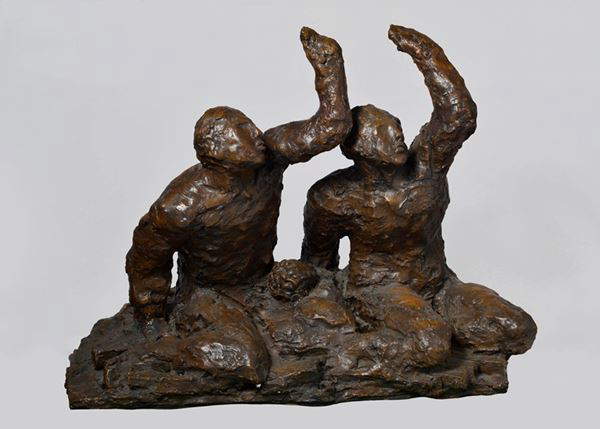

Many of the artist’s works are part of private collections, and even today many are for sale at Italian galleries and auctioned. However, several of the artist’s works are preserved in important museums, both Italian and international. In northern Italy, it is possible to see Chia’s works at the Castello di Rivoli, where the paintings Bruti protagonists of a monkey’s erotic fantasy (1979-80), Sinfonia incompiuta (1980), Figure con bandiera e flauto (1983), Uomo in rosa (2001) and the sculpture Senza titolo (1984) can be found.
Another substantial group of works is owned by Galleria Mazzoli in Modena, mainly paintings made recently such as Discussion on Art and Painting (1998-2000), Melancholy of the Painter (1999-2000), Immortal Gino (2000), Portrait Enzo (2001), Untitled 2 (2003), Untitled 1 (2003), Waiting (2013-14), Posing (2013-14). Also in Emilia Romagna, the Maramotti Collection in Reggio Emilia has La cucina di Dionisio (1980). In Rome, Chia’s works can be found in the Giorgio Franchetti Collection, which includes Bridge of Frogs without the Bridge (1979), The Lie (1979-80), and in the D’Ercole Collection, where Excited Shepherd Boy (1980) and Leave the Artist Alone (1985) are preserved.
In Europe, Chia’s works appear in several countries. In Switzerland, in the Gunti Brands Collection is La mercante di scacchiere (1976), while in Berlin the Zattera temeraria (1982) is in the Marx Collection, also in the Stedelijk Museum in Amsterdam is Rabbit for dinner (1982). In Britain are two works dated 1981, Courageous Boys at Work, in the Scottish National Gallery of Modern Art, Edinburgh, and Water Bearer London, in the Tate Gallery, London. Finally, The Idleness of Sisyphus (1981) can be seen in MoMA - Museum of Modern Art in New York.
 |
| Sandro Chia, life, style and works of the Transavanguardia exponent |
Warning: the translation into English of the original Italian article was created using automatic tools. We undertake to review all articles, but we do not guarantee the total absence of inaccuracies in the translation due to the program. You can find the original by clicking on the ITA button. If you find any mistake,please contact us.